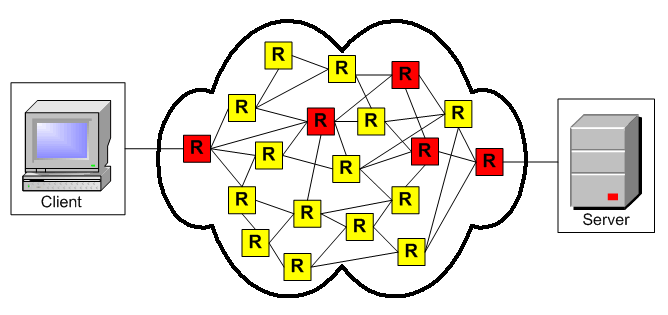
Packets are relayed through special-purpose computers called routers. When a packet arrives, the router is programmed to look at the destination Internet Protocol (IP) address, and, using information stored in routing tables, it decides which router to forward the packet to:

The routers keep making these best effort routing decisions until the packet reaches its destination.
Routers do not worry about errors. If a router gets so busy that it can not keep up with the flood of incoming traffic, it simply drops packets. Similarly, the number of hops a packet makes is counted, and, if it exceeds a threshold "time to live" (TTL), it is dropped.
Routers communicate their status and pass routing table changes to adjacent routers using the internet control message protocol (ICMP). This enables the network to adjust to hardware failure and overload as well as the addition of new networks.
The routers are connected in a redundant mesh pattern, and, if one breaks or is busy, the others can route traffic around it.
The route between two IP network nodes may be displayed using a Trace Route client and the time it takes to traverse a route may be measured using a Ping client.
Note that the routers only route packets. They do not know what sort of data is in the packets. All of the application intelligence is in the client and sever. Having a dumb network with intelligence at the network edges has been a central design goal since the beginning of the Internet. It has been critical to innovation.
Since all it does is route a packet regardless of content, the router only examines information in the header of the IP packet. The header contains several fields, and three of the important ones are: